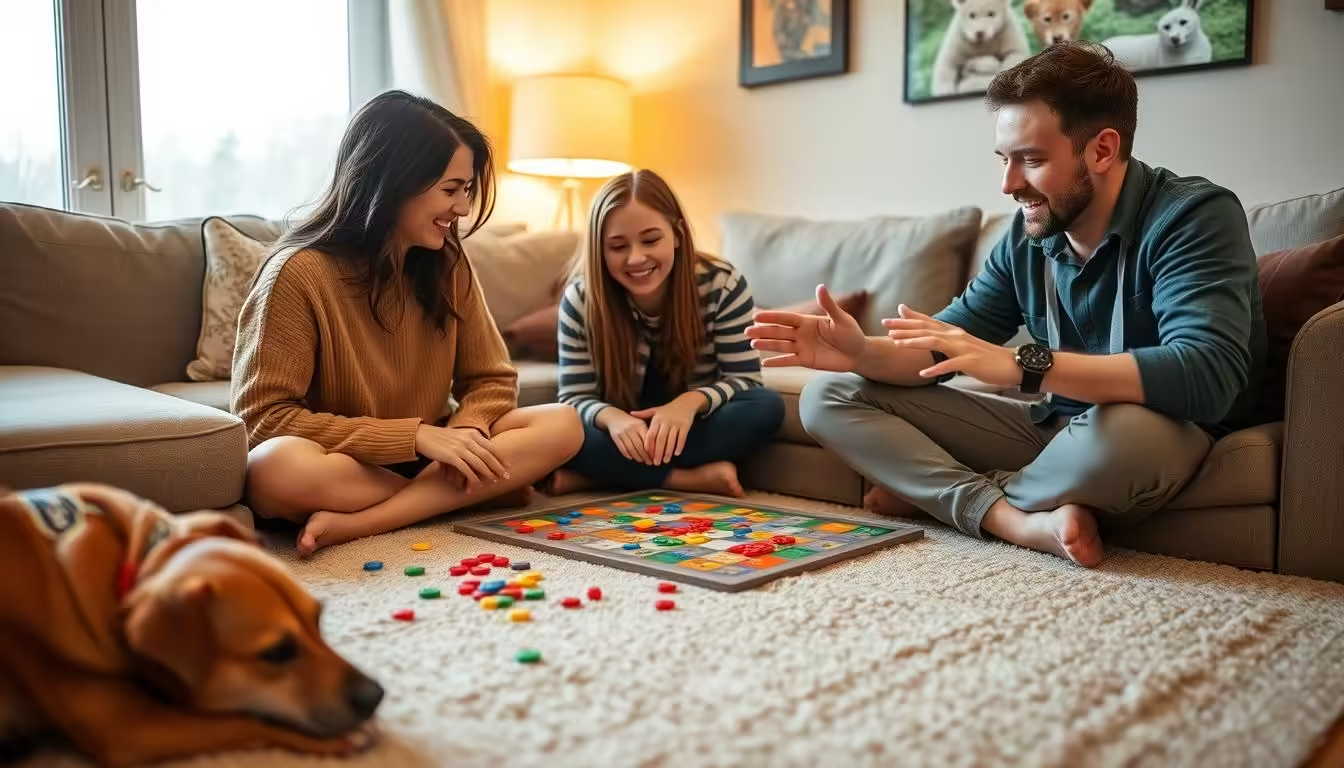Dog attacks on babies are tragic and more common than many think. Why Would a Dog Attack a Sleeping Baby? The Centers for Disease Control and Prevention (CDC) reports that about 4.5 million people in the U.S. get bitten by dogs each year. Kids aged 5 to 9 are especially at risk.
Dogs might attack due to loud noises, sudden movements, or even a baby’s scent. It’s vital to watch over them to prevent dog bites and keep babies safe. Taking care of your dog and following safety steps can help avoid these sad events.
Key Takeaways
- Dog attacks on sleeping babies can happen unexpectedly, often due to a dog’s instincts, lack of socialization, or medical issues.
- Proper supervision, obedience training, and gradual introduction of a baby to a dog are essential to prevent aggressive behavior.
- Recognizing signs of stress in dogs and addressing factors like territoriality and resource guarding can help create a safe environment.
- Consulting with professional trainers or organizations like the American Kennel Club (AKC) can provide valuable resources for pet owners.
- Being proactive and vigilant about dog and baby safety is crucial to avoid tragic incidents.
Table of Contents
Understanding Canine Behavior
To keep your family safe from dog bites, it’s important to know how dogs behave. Dogs have lived with humans for over 12,000 years. Yet, we often don’t understand their motivations and instincts well. Learning about canine psychology helps you manage your dog’s behavior, especially around kids.
The Pack Mentality
Dogs are social animals with a pack mentality. In the wild, they live in groups with roles and responsibilities. At home, they see you and your family as their pack. Knowing this helps you understand their behavior and be the pack leader.
Instincts and Survival
Dogs have instincts from centuries of evolution. These instincts help them survive, like guarding resources and territory. Understanding these instincts can explain why dogs might act aggressively, even to people they know.
Socialization Factors
How a dog is socialized affects its adult behavior. Positive experiences with people and animals help a dog be well-adjusted. But, without socialization or traumatic events, dogs can become fearful, anxious, or aggressive.
| Canine Psychology Concepts | Importance for Dog Behavior |
|---|---|
| Pack Mentality | Establishes the dog’s role within the family hierarchy and influences their interactions with humans |
| Instincts and Survival | Drives behaviors like resource guarding, territorial protection, and response to perceived threats |
| Socialization Factors | Shapes a dog’s temperament and ability to interact safely with people, especially children |

Understanding canine behavior helps you manage your dog’s actions around your family. This knowledge prevents dog bites and creates a safe, harmonious home for everyone.
Common Triggers for Aggression
Aggression in dogs can come from many sources, posing a danger to young kids. Knowing what triggers this behavior is key to keeping your family safe.
Fear and Anxiety
Dogs may get aggressive when they feel scared or anxious. Things like sudden movements or loud noises can upset them. Even being grabbed or poked can make them fearful.
Toddlers or preschoolers getting too close to a resting dog can make the dog feel nervous. This can lead to an attack.
Territory and Resources
Dogs may also get aggressive when they feel their territory or resources are being threatened. This includes their personal space, food, toys, or even their owners. When kids enter the dog’s space or try to take their things, the dog may defend itself.
Pain and Illness
Dogs in pain or discomfort may become more aggressive. Even a gentle touch or being approached by a child can upset them. This is especially true if they’re sick or hurt.
By knowing what triggers aggression in dogs, you can prevent dangerous situations. This helps keep your family safe around your dog.

“A dog bite can have lasting physical and emotional effects on a child, which is why it’s crucial to understand the potential triggers for dog aggression.”
The Role of Breed and Temperament
Dog behavior is shaped by both breed traits and individual temperaments. Some breeds, like pit bulls and mixed breeds, are more likely to bite and cause harm. Mixed German shepherds, Labrador retrievers, and golden retrievers can also show aggression under certain conditions.
Breeds Prone to Aggression
Breed traits can hint at a dog’s behavior, but individual temperaments matter a lot. A study by Wexner Medical Center found pit bulls and mixed breeds at high risk for biting. Yet, not every dog in these breeds will be aggressive.
Individual Temperament Variations
Every dog is different, shaped by early socialization, training, and life experiences. Some breeds, like Great Pyrenees, may guard resources or show aggression between 1 and 3 years old. Knowing your dog’s personality and using positive training can help manage these issues.
| Breed | Aggression Risks | Potential Triggers |
|---|---|---|
| Pit Bull | Highest risk of biting and causing the most damage per bite | Territoriality, resource guarding, fear/anxiety |
| Mixed Breed | Second highest risk of biting and causing the most damage per bite | Unpredictable behavior, potential for inherited aggression traits |
| Great Pyrenees | Prone to resource guarding and behavior issues like aggression between 1-3 years | Protecting possessions, fear/anxiety, lack of early socialization |
The relationship between breed and temperament in dog behavior is complex. Each dog is unique, and understanding their individual traits is key. Proper training, socialization, and knowing your dog’s personality can foster a safe and loving bond.

Signs of Stress in Dogs
It’s important to know the signs of stress in dogs, especially when kids are around. Dogs show stress through body language and sounds. Knowing signs like growling, licking lips, staring, trying to walk away, and whining helps keep everyone safe.
Body Language to Watch For
Dogs communicate through body language. Look out for signs like:
- Ears pulled back
- Tense or stiff body posture
- Whale eye (showing the whites of the eyes)
- Tucked tail
- Panting or yawning without being hot or tired
Petting or hugging a stressed dog can make it even more anxious.
Vocalizations and Behavior Changes
Dogs also show stress through sounds and actions. Watch for:
- Growling or snarling
- Whining or whimpering
- Barking excessively
- Pacing or restlessness
- Urinating or defecating in the house
Spotting these signs helps you know when your dog is stressed. This lets you make a calmer space for them.

By paying attention to your dog’s body language, vocalizations, and behavioral changes, you can catch stress early. This is especially helpful when kids are around, keeping everyone safe and happy.
How to Safeguard Your Baby
Supervision is key to keeping your baby safe around your dog. It’s best to keep them in separate rooms, especially when they sleep. Always keep a door closed between them to avoid accidents.
If they must be in the same room, be extra careful. Be ready to step in if needed to stop any bites.
Supervision is Key
The Dogs Trust says 91% of dog bites to kids happen at home with a familiar dog. Always watch your baby and dog closely when they’re together to prevent accidents.
Creating Safe Spaces
Make sure your baby and dog have their own safe areas. This could be separate rooms or spots where they can safely play and relax together.
Training Your Dog
Teaching your dog good behavior around your baby is crucial. The Dogs Trust offers a virtual masterclass for parents and caregivers. It teaches how to understand your dog’s body language and spot warning signs.
By using positive training, your dog will feel safe and happy around your baby.
To create a safe space for your baby and dog, you need to be proactive. Follow these steps to enjoy having them together while keeping them safe.
The Importance of Socialization
Proper socialization is key to stopping aggressive behavior in dogs. Start early, exposing them to many people, animals, and places. This helps them make good associations and learn social skills.
How to Socialize Your Dog Properly
Start socializing your dog early, between 3-12 weeks. Introduce them to new things slowly and positively. Use treats and praise for good behavior, and don’t force them if they’re uncomfortable.
- Expose your dog to different people, including children, the elderly, and individuals with disabilities.
- Take your dog to various locations, such as parks, pet stores, and public transportation.
- Introduce your dog to other well-socialized pets in a calm and supervised setting.
- Enroll your dog in puppy training classes to help them learn appropriate social skills.
Introducing Your Baby to the Dog
When you bring a new baby home, introduce them to your dog slowly and watch closely. Positive reinforcement during these moments can help your dog and baby get along well.
- Start by having your dog get used to the baby’s scent before the introduction.
- Establish a safe, designated space for the dog and baby to interact, with clear boundaries.
- Reward your dog with treats and praise when they display calm and gentle behavior around the baby.
- Never leave your dog and baby unsupervised, even for a moment, to ensure their safety.
By focusing on socialization and introducing your dog to your baby carefully, you can create a positive and safe bond. This makes your home a happy and enriching place for your family.
Recognizing Dog Body Language
It’s key to understand your dog’s body language to avoid attacks, especially around kids. Dogs send out signals about how they feel and what they plan to do. Spotting these signs early can stop things from getting worse.
Understanding Relaxed vs. Aggressive Signals
When a dog is relaxed and friendly, it shows in its body language. It will have a loose, wiggly body, wag its tail, and have a calm, open mouth. But, if a dog looks stiff, has raised hackles, bares its teeth, or stares intensely, it’s showing aggressive signs.
The Importance of Reading Signs Early
Teaching family, especially kids, about dog body language is vital for safety. Spotting aggressive signals or relaxed signals early lets you act fast. This can stop any early warning signs of aggression before they happen.
| Relaxed Signals | Aggressive Signals |
|---|---|
| Loose, wiggly body posture | Stiff, upright body |
| Wagging tail | Raised hackles |
| Relaxed, open-mouthed expression | Bared teeth, direct staring |
Knowing these dog body language signs and acting quickly can make your home safer for everyone. It’s about creating a safe space for your family and your pet.
“The key to preventing dog attacks is recognizing the early warning signs and taking appropriate action.”
Should You Worry About a Dog’s Reaction?
Keeping pets safe, especially around babies, is very important. A dog’s reaction to a sleeping baby can be hard to predict. Knowing what might cause problems and your dog’s past can help keep your baby safe.
Assessing Situational Risks
Looking at the environment and stressors is key to understanding your dog. Think about your dog’s age, size, and how they act. A survey showed 31% of dog owners said their dog growled or acted aggressively towards a child.
Also, research found that unneutered male dogs were in 70-76% of dog bite cases.
Understanding Your Dog’s History
Your dog’s past and training matter a lot in new situations, like with a baby. A study in Pediatrics found family dogs were in 88.7% of child dog bite cases. Knowing about any past issues or challenges is crucial.
Even calm dogs can act strangely in new situations, like a baby. Being careful and watchful can help keep your child and pet safe.
“According to the Centers for Disease Control and Prevention (CDC), about 4.5 million dog bites occur each year in the United States.”
What to Do After an Incident
If a dog bites your child, the first thing to do is get them medical help. Even small bites can cause serious infections. It’s important to get help right away to avoid bigger problems.
After the child is safe, you must report the dog attack to the police. This helps keep everyone safe by tracking dangerous dogs. Give the police all the details you can about what happened.
Ensuring Medical Attention
When a dog bites, keep the child away from the dog. It’s crucial to get medical help, no matter how small the bite is. Dog bites can quickly turn into serious infections if not treated.
The CDC says about 885,000 people need medical help for dog bites every year. Kids and seniors are most often hurt by dogs.
Reporting the Attack
After making sure the child is okay, report the dog bite to the police. This helps keep the community safe by tracking dangerous dogs. It also warns the dog’s owner of possible legal trouble.
The cost of dog bite injuries has gone up a lot. In 2022, the average cost of a claim was $64,555. This is a 32% increase from the year before.
Reporting the incident quickly is key. It keeps everyone safe and warns the dog’s owner of legal and financial risks.
Training Techniques to Prevent Aggression
To manage dog behavior and stop aggression, you need to act early. Positive reinforcement training and getting help from experts are key.
Positive Reinforcement Strategies
Positive reinforcement is a great way to train dogs. It rewards good behavior, making your dog feel good around kids and babies. This builds trust and a strong bond with your family.
- Reward calm, gentle interactions with treats, praise, and affection.
- Gradually introduce your dog to the presence of children, ensuring positive experiences.
- Teach your dog commands like “leave it” or “go to your mat” to redirect their attention away from potential triggers.
Professional Training Options
For serious behavior problems, professional training is a big help. Places like the American Kennel Club (AKC), Petco’s Dog Training Program, or Cesar Millan’s Dog Psychology Center offer expert advice. They help with dog behavior around babies and kids.
| Training Provider | Specialty | Locations |
|---|---|---|
| American Kennel Club (AKC) | Obedience, Agility, Therapy Dog Training | Nationwide |
| Petco Dog Training | Puppy, Basic, and Advanced Obedience Training | Petco Stores Nationwide |
| Cesar Millan’s Dog Psychology Center | Behavior Modification, Pack Leadership Training | Los Angeles, California |
Using positive reinforcement and getting professional help can stop aggression. This creates a safe, happy home for your family and dog.
Establishing a Routine for Safety
Creating a routine for your dog and baby is key for their safety. Set clear rules and keep things calm. This way, you can lower the chance of accidents.
Consistent Interaction Guidelines
Make sure everyone knows how to interact with your dog and baby. Set rules like:
- No unsupervised interactions between the dog and baby
- No sharing of food or treats between the dog and baby
- Gentle petting and no rough play with the dog
- Respecting the dog’s personal space and boundaries
Tips for Calm, Controlled Environments
Give your dog and baby their own spaces for a stress-free home. Create a “dog zone” and a “baby zone”. This helps keep things calm.
When introducing them, do it slowly and watch closely. Keep your dog happy and active. This can help them stay calm and friendly.
By following a routine and keeping things calm, you ensure your dog and baby’s safety. Focus on positive interactions and avoid conflicts. This is all about proactive management and training.
Resources for Pet Owners
Being a responsible pet owner means having the right resources. This is especially true when it comes to managing your dog’s behavior around babies. Organizations like the Association of Professional Dog Trainers (APDT), Dogs Trust, and The Humane Society are great places to start. They offer lots of information and training materials to help you.
Books and Online Courses
There are many books and online courses that can help you understand your dog better. Titles like “The Puppy Primer” by Patricia McConnell are full of useful information. Online courses from the APDT also offer valuable insights and strategies to keep your baby safe.
Professional Help for Dog Behavior Issues
If your dog’s behavior is causing problems, it might be time to get professional help. A dog behaviorist or trainer can help address issues like anxiety or resource guarding. They can create a training plan that keeps your family safe. Getting professional help is a smart choice for your baby’s safety.
FAQ
Why would a dog attack a sleeping baby?
Dogs might react to loud noises or sudden movements. They could also be triggered by a baby’s scent. Always watch over dogs and babies to prevent bites and keep everyone safe.
What factors contribute to a dog’s aggressive behavior around a baby?
A dog’s pack mentality and survival instincts are key. Socialization also plays a big role. Dogs may bite due to fear, pain, or aggression. Territorial behavior or guarding can also lead to aggression.
What breeds of dogs are more prone to biting and causing damage?
Pit bulls and mixed breed dogs are at high risk of biting. Other breeds like mixed German shepherds, Labrador retrievers, and golden retrievers are also mentioned. But, a dog’s behavior can vary a lot, even within the same breed.
What are the signs of stress or anxiety in dogs that can lead to aggression?
Signs of stress or anxiety in dogs include growling and licking lips. They might stare, try to walk away, or whine. It’s important to recognize these signs, especially when there are children around.
How can I keep my baby safe around a dog?
Always supervise when dogs and babies are together. It’s best to keep them in separate rooms, especially when they’re sleeping. If they must be in the same room, be extra careful and ready to step in if needed.
How can I properly socialize my dog to be safe around a baby?
Start socializing your dog early, exposing them to different people and animals. When introducing a new baby, do it slowly and watch closely. Positive reinforcement during these interactions can help your dog and baby get along well.
What should I do if a dog bite incident occurs?
If a dog bites, separate the child and dog right away. Get medical help for the child, even if the wound seems small. Dog bites can lead to infections. Report the incident to the authorities but don’t punish the dog. Instead, get help from a professional dog behaviorist.
What resources are available to help me learn about dog behavior and safety around babies?
Groups like the Association of Professional Dog Trainers (APDT), Dogs Trust, and The Humane Society offer great resources. You can also find books, online courses, and professional behaviorists for more detailed advice on dog behavior and safety around babies.











